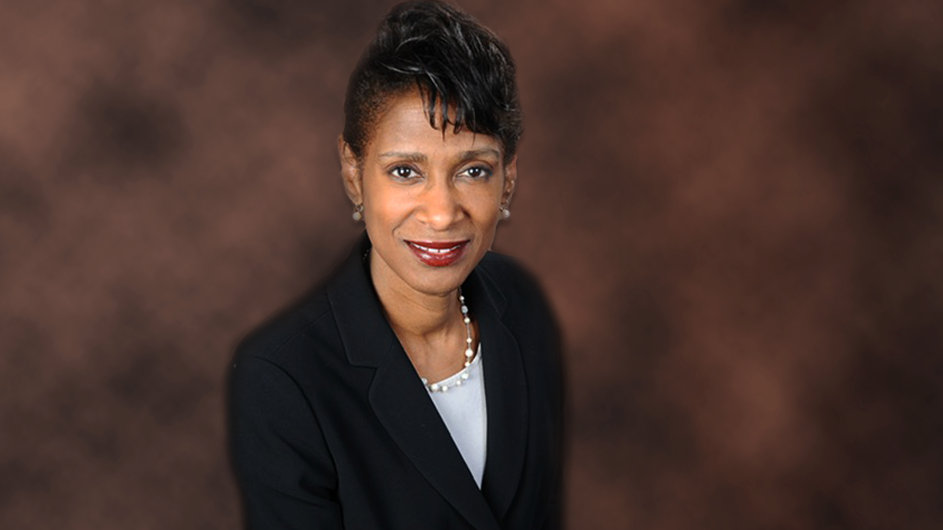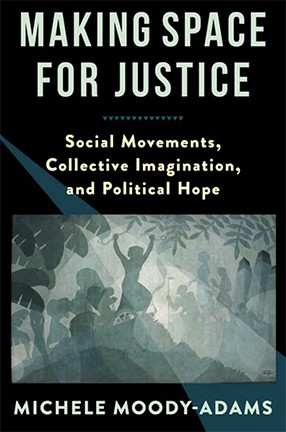The Power of Social Movements in Effecting Change
In “Making Space for Justice,” Professor Michele Moody-Adams shows how such movements bridge the gap between political thought and activism.

From 19th-century abolitionism to Black Lives Matter today, progressive social movements have been at the forefront of social change. Yet it is seldom recognized that such movements have not only engaged in political action, but also posed crucial philosophical questions about the meaning of justice, and about how the demands of justice can be met.
In Making Space for Justice: Social Movements, Collective Imagination, and Political Hope, Michele Moody-Adams, the Joseph Straus Professor of Political Philosophy and Legal Theory, and chair of the Philosophy Department, argues that anyone who is concerned with the theory or practice of justice must ask what can be learned from social movements.
Drawing on a range of examples, she explores what social movements have shown about the nature of justice, along with what it takes to create space for justice in the world. Moody-Adams considers progressive social movements as wellsprings of moral inquiry and as agents of social change, drawing out key philosophical and practical principles. Making Space for Justice contends that the insights arising from social movements are critical to bridging the gap between discerning theory and effective practice—and should be transformative for political thought as well as for political activism.
Moody-Adams discusses her book with Columbia News, along with why her sense of wonder has recently been enriched by poetry, and why she would like to retire to Big Sur.
Q. What inspired you to write this book?
A. First, the observation from Martin Luther King, Jr. that “social progress never rolls in on the wheels of inevitability,” but comes only through the tireless, demanding work of dedicated people. This book is partly an effort to understand the work and extraordinary sacrifices that ordinary people have been willing to endure in the pursuit of justice.
When those sacrifices constructively transform the social world, this is almost always because social movements draw on the human capacity to reimagine the world, and to help others understand the possibilities for reshaping the world in line with new ways of seeing and thinking about social life. So, a second source of my inspiration is the power of human imagination. I explore the ways in which social movements have drawn on this power—in aesthetic activism, language activism, and narrative activism—to help make space for justice.
Third, the national and global protests sparked by the May 2020 murder of George Floyd most directly inspired me to put my reflections in their current form. As the summer of 2020 progressed, those protests helped transform anger and despair into a politically potent hope, and I wanted to provide philosophically informed reflection on the nature and sources of that hope. How do movement participants sustain political hope—and often inspire it in others—even in the face of deep disappointment, and sometimes even when they confront powerfully regressive backlash movements? Making Space for Justice answers this question by exploring the role of affect in political life—especially the roles of hope and fear.

Q. Can you give examples from the book of how social movements bridge the gap between theory and practice, as well as political thought and political action?
A. Bridging the gap between theory and practice is partly a matter of generating more discerning theory. I argue that most successful social movements produce engaged moral inquiry that deepens our understanding of the demands of justice by virtue of nuanced understanding of the experience of injustice. The book shows that one of the most important insights to emerge from engaged moral inquiry is that we have a duty not to look away from injustice: As James Baldwin urged, “nothing can be changed until it is faced.” This is why Emmett Till’s mother was right, in 1955, to insist on an open casket at her son’s funeral, and to ensure that his body would be photographed by the press. This is also why from 1958 to 1968, Martin Luther King, Jr. was right to think that Jim Crow segregation would not come to an end unless the world was forced to confront disturbing images of physical violence against nonviolent protesters.
But we can bridge the theory-practice gap only when we genuinely understand what constitutes effective practice. It is easy to assume that the methods of social movements are mainly sit-ins, marches, boycotts, and various public protests. Making Space for Justice shows that the most effective social movements have recognized the need for additional methods such as narrative activism (as in the writing and dissemination of slave narratives in 19th-century abolitionism), language activism (as in the development of the concept of sexual harassment in the 20th-century women’s movement), and aesthetic activism (as in the 21st-century efforts of protestors seeking to remove dehumanizing monuments from places of public honor).
Q. What books have you read lately that you would recommend, and why?
A. In the Theaetetus, the Platonic Socrates asserts that philosophy begins in wonder. Lately, I have found that my sense of wonder has been greatly enriched by reading poetry, especially that of Emily Dickinson and Mary Oliver. I am making my way through a two-volume collection of Oliver’s luminous poems, New and Selected Poems. The edition of Dickinson’s poems that I know best is a 1960, one-volume collection, The Complete Poems, edited by Thomas Johnson. As a philosopher reading the extraordinary poetry of Oliver and Dickinson, I have become convinced that it is time to call a truce in the age-old quarrel between philosophy and poetry.
Q. What's on your nightstand now?
A. The reading I’m doing for pleasure falls into two main categories: memoirs (in the broad sense, to include autobiography) and books about film and filmmaking.
One memoir that recently surprised and engaged me was Robert Graves’s Goodbye to All That, for its complicated interplay between the personal and the political, and the combination of biting humor and moral sensitivity with which he writes about the horrors of World War I. I’ve just started to read Mary McCarthy’s Memories of a Catholic Girlhood, which I was initially drawn to in an effort to understand how McCarthy’s life changed after her parents died in the 1918 flu epidemic. I hope to read School of the Arts Writing Professor Margo Jefferson’s Negroland next, partly because I am a native Chicagoan, like Jefferson, but mainly because by all accounts her memoir is brilliantly written.
Books on film and filmmaking have become important because I’m contemplating developing an undergraduate course on philosophy and film. Since I’m a fan of movies such as The Red Shoes and Black Narcissus, I have just finished a book by Andrew Moor, Powell and Pressburger: A Cinema of Magic Spaces. I’m also reading several books by philosophers about film, including Robert Pippin’s Douglas Sirk: Filmmaker and Philosopher. Sirk’s 1959 remake of Imitation of Life is one of my favorite films, and Pippin provides an illuminating analysis of what makes that film so distinctive.
Q. Do you have a favorite book that no one else has heard of?
A. One of my favorite books is probably not well-known outside the world of filmmakers—Walter Murch’s In the Blink of an Eye: A Perspective on Filmmaking. Barry Jenkins, who directed the 2016 film Moonlight, has praised Murch’s book for what it taught him about film editing and filmmaking. But In the Blink of an Eye is also about the role of emotion in filmmaking and viewing, about how we perceive and think about the world (in and out of the movies), and about what it is to tell a good story.
Q. Any exciting summer plans?
A. I’m excited to get back to the central coast of California after being unable to travel there during the pandemic. For more than two decades, our family spent at least part of several summers in Santa Cruz, Monterey, and Big Sur, one of my favorite places to visit. Indeed, if I had my druthers, I would retire in Big Sur—despite the constant threat of wildfires, mudslides, and earthquakes. Retiring there is unlikely to happen, but at least I can travel down the Pacific Coast Highway to enjoy one of the most beautiful shorelines in the world.
Q. You're hosting a dinner party. Which three academics or scholars, dead or alive, would you invite, and why?
A. It is hard to keep the list to three, but I would most want to invite James Baldwin, Toni Morrison, and Albert Camus, because they understood the power of literature to challenge and enlighten us, and because they appreciated the need for social thought that relies on imagination to inspire hope, even in the face of disappointment. Most important, the conversation would certainly be lively and challenging.